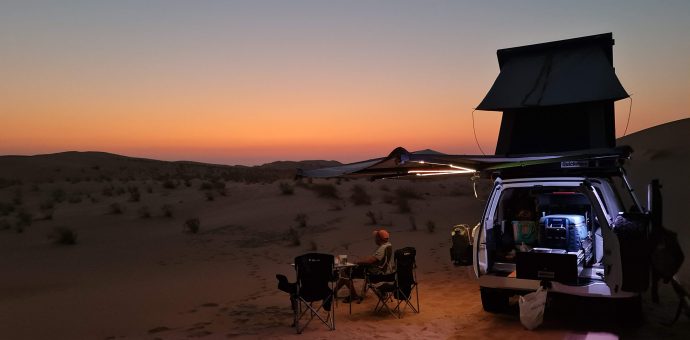The Ultimate Guide to Overlanding Vehicle Builds

The Ultimate Guide to Overlanding Vehicle Builds
If you’re ready to take your adventures off-road and explore the great outdoors, building an overlanding vehicle is a must. This comprehensive guide will provide you with all the information you need to know to create your dream off-road rig, from choosing the right vehicle to outfitting it with the necessary equipment and modifications. Get ready to embark on the ultimate overlanding experience!
Determine Your Budget and Goals.
Before you start building your overlanding vehicle, it’s important to determine your budget and goals. How much are you willing to spend on the build? Are you looking for a basic setup or do you want all the bells and whistles? Knowing your budget and goals will help you make informed decisions throughout the build process. Consider factors such as the type of terrain you’ll be tackling, the duration of your trips, and the level of comfort and convenience you desire. Once you have a clear understanding of your budget and goals, you can start researching and selecting the right components and modifications for your overlanding vehicle.
Choose the Right Vehicle.
The first step in building your overlanding vehicle is choosing the right base vehicle. Consider factors such as the size, weight, and capabilities of the vehicle. Will you be traveling solo or with a group? Do you need a vehicle with off-road capabilities or will a standard SUV suffice? Research different makes and models, read reviews, and talk to other overlanders to get an idea of what vehicles are popular and reliable for off-road adventures. Once you have narrowed down your options, take the vehicles for test drives to see how they handle and if they meet your needs. Remember, choosing the right vehicle is crucial for a successful overlanding experience.
Upgrade Your Suspension and Tires.
Upgrading your suspension and tires is an essential step in building your overlanding vehicle. Off-road adventures can be rough on your vehicle, so having a suspension system that can handle the terrain is crucial. Look for suspension upgrades that offer increased ground clearance, improved shock absorption, and better handling. Additionally, investing in high-quality off-road tires will give you better traction and grip on uneven surfaces. Consider tires with aggressive tread patterns and durable construction to withstand the demands of off-roading. Upgrading your suspension and tires will not only enhance the performance of your vehicle but also improve your overall off-road experience.
Install Off-Road Lighting and Recovery Gear.
When building your overlanding vehicle, don’t forget to install off-road lighting and recovery gear. Off-road lighting is essential for navigating dark trails and providing visibility in challenging terrain. Look for high-quality LED light bars or spotlights that can be mounted to your vehicle’s roof or bumper. These lights will illuminate the path ahead and make it easier to spot obstacles. Additionally, investing in recovery gear such as a winch, recovery straps, and a shovel is crucial for getting out of sticky situations. Off-roading can sometimes lead to getting stuck in mud, sand, or other difficult terrain, so having the right tools on hand will help you recover your vehicle and continue your adventure.
Create a Functional and Comfortable Interior.
When building your overlanding vehicle, it’s important to create a functional and comfortable interior that meets your needs on the road. Start by considering your sleeping arrangements. Many overlanders opt for a rooftop tent or a bed platform inside the vehicle. Make sure to choose a setup that provides enough space and comfort for a good night’s sleep.
Next, think about storage solutions. Overlanding requires bringing along a lot of gear and supplies, so having ample storage space is essential. Consider installing drawers, cabinets, or storage boxes to keep everything organized and easily accessible.
Don’t forget about seating and seating arrangements. Depending on the size of your vehicle, you may want to install additional seats or create a comfortable seating area for relaxing and socializing.
Lastly, consider the overall layout and design of your interior. Think about the flow of the space and how you can maximize functionality. Consider adding features like a fold-out table, a kitchenette, or a portable toilet if desired.
By creating a functional and comfortable interior, you’ll be able to enjoy your overlanding adventures to the fullest.
